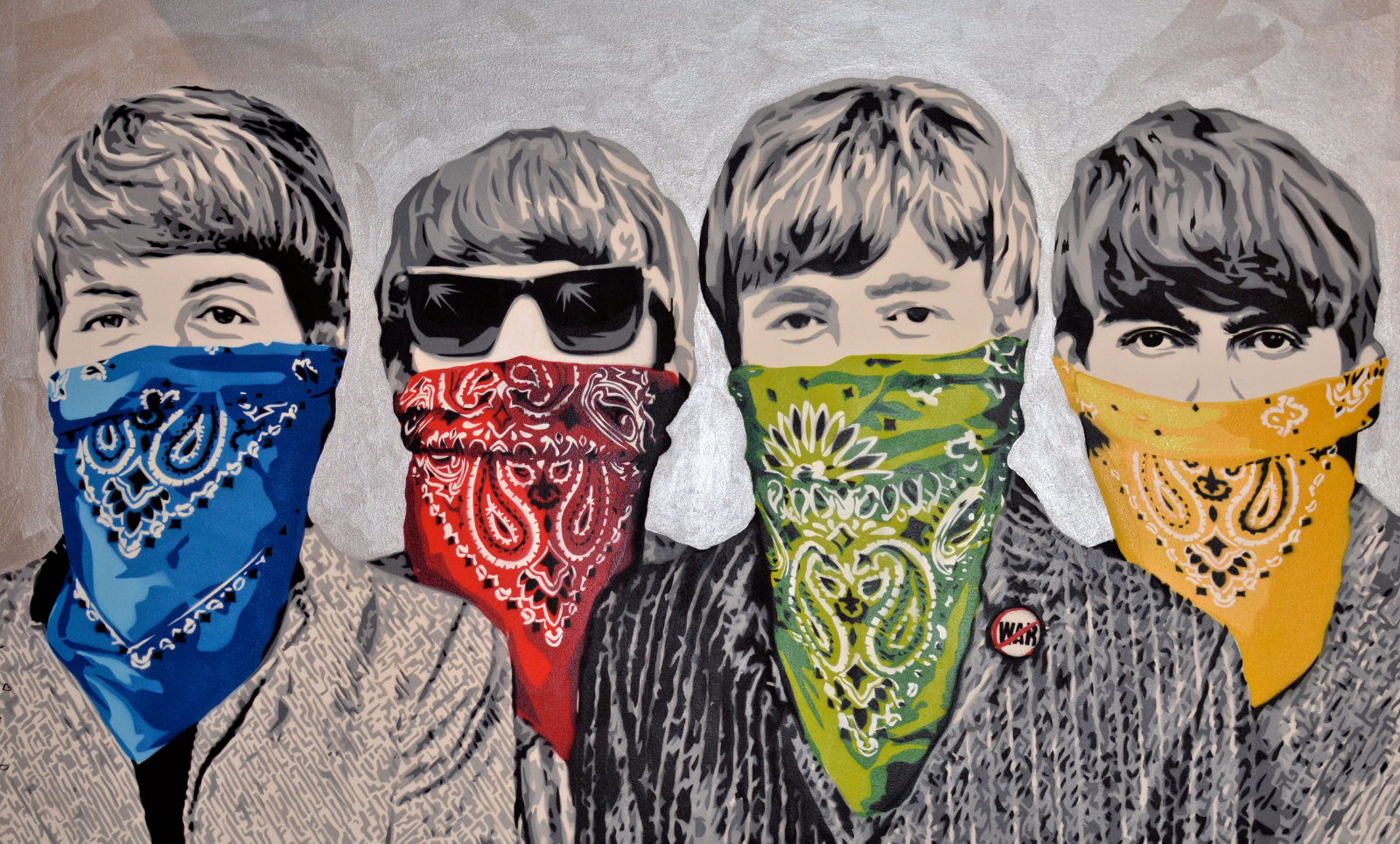
FASHION From the history books to hot off the runway: Victoria Whisker looks at how the face mask has evolved from necessity to a fashion accessory and why so many people are creating their own
First published in the July 2020 issue of Lucire KSA
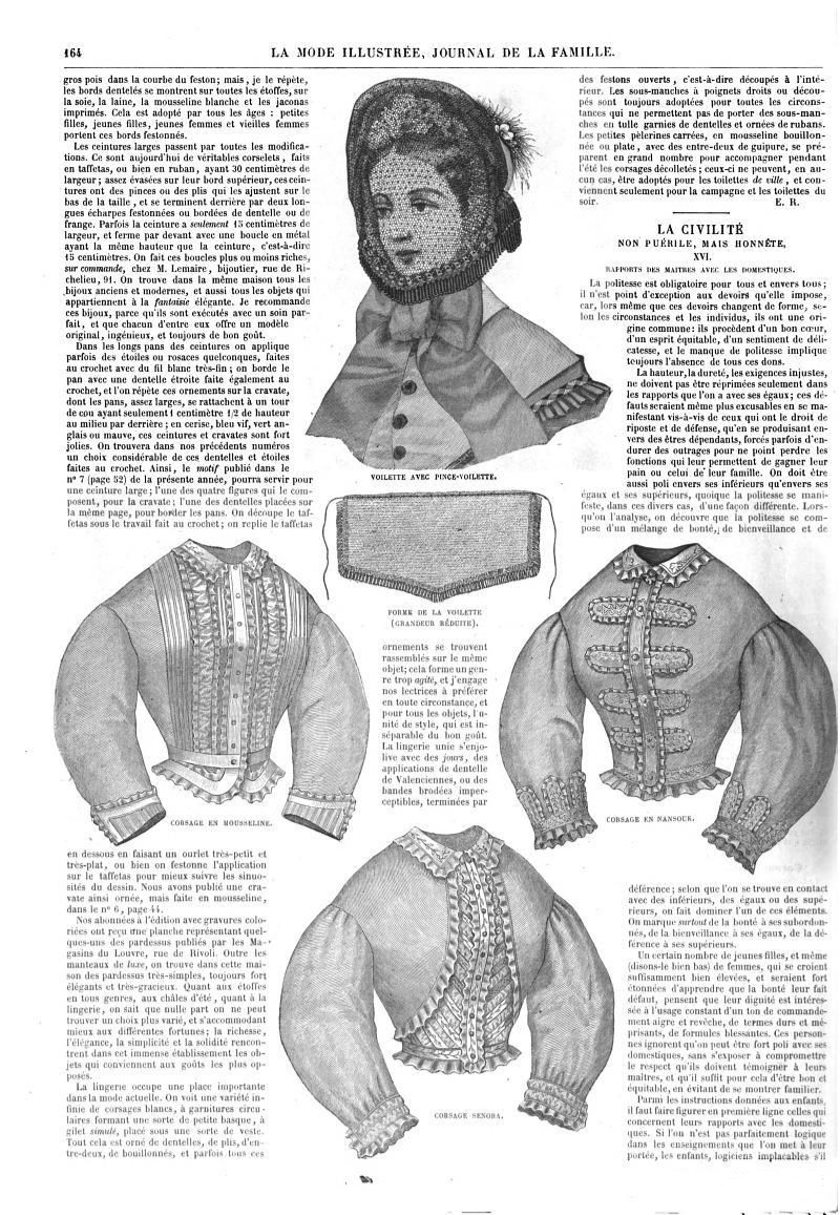

Above, from top: A page from La Mode Illustrée, May 1, 1864, featuring a veiled woman. Vietnamese designer Do Quyen Hoa in her studio in Hanoi.
Victoria Whisker is a writer for Lucire.
Fashion will not stop due to a pandemic. When we do go outside for the oh-so-rare supermarket raid, we do have to look put together, and yes, that means changing out of our sweats. Sterile surgical masks have been reinvented into cotton face masks with artistic flair, solidifying them as the new accessory. They are a blank canvas for people to express their individuality.
The evolution of the face mask began earlier than you might have thought. It all started in the 13th century, with silk being held up to the mouth in the Chinese emperors’ courts. This was the start of the hygiene-focused social edict of the high class. Covering your face and protecting others when sick became an integral part of social custom and a sign of cleanliness.
In 1918, the Spanish ’flu pandemic saw people wearing a layered gauze mask over the mouth as a preventive measure. Laura Spinney from the Economic Times explained that up until this time, masks were used primarily to protect oneself, but this started the mainstream practice of mask-wearing to protect others from one’s own germs. They evolved into a social courtesy with ties to the civic duty of protecting others.
Nineteen years later, in China, the government used fashion to promote face masks in spring fashion shows. Huang Wei, a librarian reporting for SixthTone stated that ‘other outlets produced tutorials that taught housewives how to knit their own wool masks to use in the winter’. They even used the influence of celebrities wearing masks to encourage citizens to wear them. Hence, the mask evolved from a health necessity to a fashion accessory, and in Asia became as routine as putting on your shoes before leaving the house.
Fashion has been used as a tool to promote the health benefits of masks throughout history in England. In the 19th century women wore lace veils covering their face, because research discovered bacteria clung to dust particles. In World War II masks were worn as preventive measures against the smog that hung like a thick blanket over London. Postwar, the likes of the Beatles wore them as promotion.
In South Korea masks are highly regarded as an everyday accessory, where air pollution is still prevalent, and modern-day face masks are promoted by singers and boy bands. K-pop stars adorn half their faces with black face masks or worn hanging on one ear. They also serve to conceal their identity or hide swollen faces after a long flight. Masks were already part of the cultural norm, so turning a sterile blue or white surgical mask to a more elegant black is common for K-pop stars. Thus masks serve a dual purpose in elevating an essential face mask to a fashion accessory given its everyday use.
Fashion and the evolution of designer masks
Masks with a luxury fashion focus started to emerge in the early 2000s. There was a rise in masks being featured by fashion designers. This started with Alexander McQueen, during his 2010 runway collection, and was followed by Gucci who designed a lace mask worn by Billie Eilish at the 2020 Grammys. For both McQueen and Eilish, the masks appeal to a high-end street style. Billie’s black veil masks mirror the nineteenth-century lace veil women wore, whilst McQueen’s black leather seems to take inspiration from K-pop menswear trends.
With the world settling in for the months ahead, masks have adapted to a versatile designer accessory that can be paired with a suit or streetwear, coining the phrase ‘coronavirus couture’.
South Korean designers feature logos, emojis and embellishments to level up the humble face mask. Korean menswear brand BreaThe Suit by designer Kim Seor Young features masks that are worn dressed up with suits, while Greedilous women’s streetwear, designed by Youn-Hee Park, features bold prints with proceeds donated to charity.
continued below
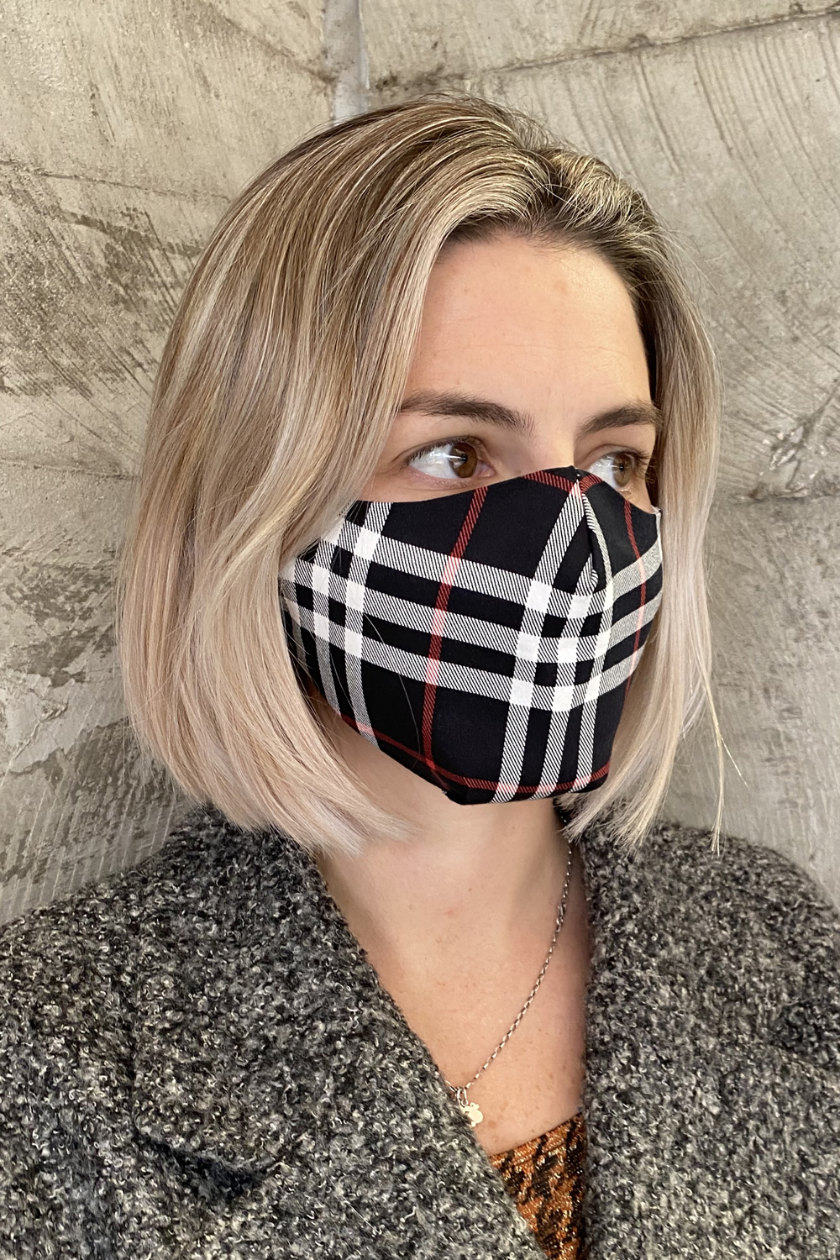
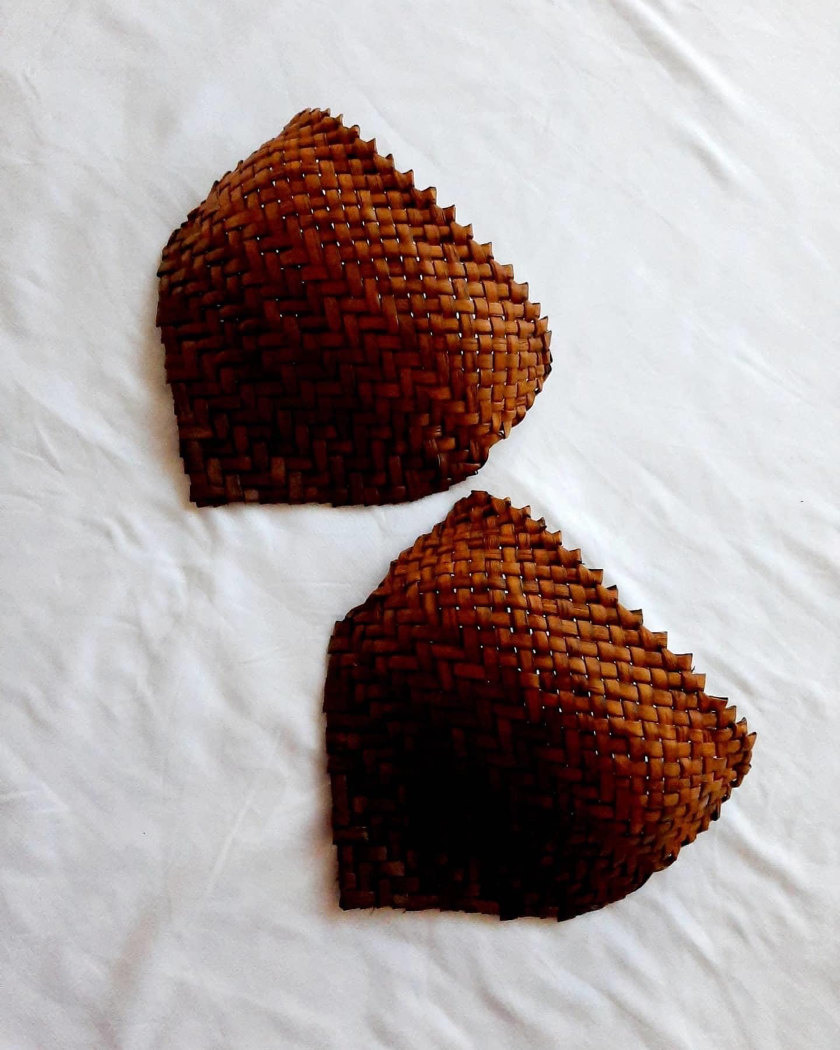
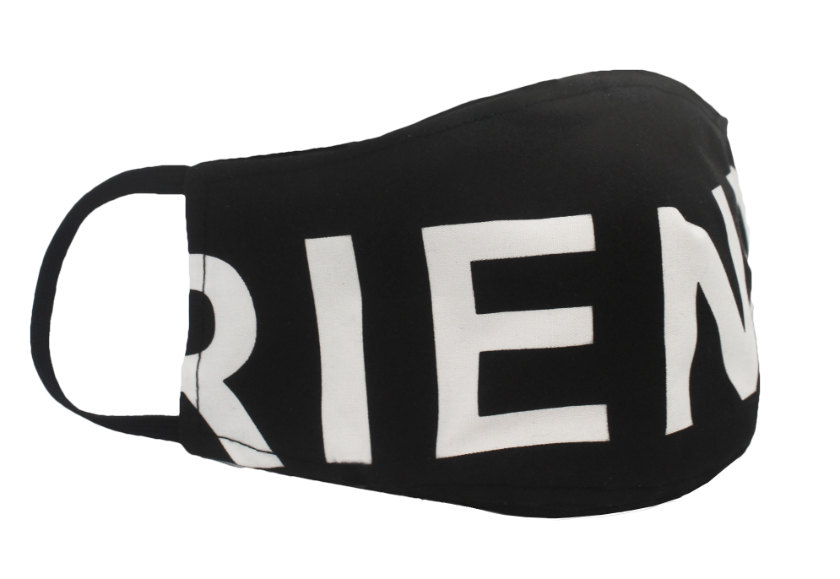
Above, from top: A design by Annah Stretton. A harakeke mask by Purewa MacGregor. Mask by Stolen Girlfriends’ Club.
Vietnamese designer Do Quyen Hoa took to embroidery using red on a black mask for contrast. She hoped to encourage foreigners to don the masks and break the stigma that only people with diseases wear them. Whatever the message or the occasion, face masks have you covered.
New Zealand designers are using their sewing skills to produce face masks using spare fabric to appeal to consumers. Mannequins are donning the cream pearled face masks designed by Annah Stretton, and Monogram cloth masks with logos vertically across the face designed by Stolen Girlfriends’ Club.
Artist Purewa MacGregor produced masks through traditional Māori flax weaving. Each designer promotes a message, MacGregor unifying her community with ‘Harakeke [flax] Nation’, or Stretton and SGC promoting reusable masks. Many are seeing masks as a blank canvas to get creative with interchangeable, reversible and contrasting prints or as a way to connect with nature.
More economical than its designer counterpart is the home-made face mask. The supply shortages for surgical masks, resulting in them being reserved for essential workers, and the price inflation due to increased demand, have contributed to the popularity of cotton face masks. Thus countries such as the US and the WHO endorse the home-made cloth mask to be worn out if you cannot maintain social distancing.
Along with the affordability, cotton face masks are also more environmentally friendly, given the reusable cloth design and being made from repurposed materials.
Politics
The world looked to masks to shield against disease, chemical warfare and pollution, yet as they are so ingrained in Asian culture they are causing racism. Stereotyping was highlighted by an article by The New York Times showing a person of Asian descent wearing a mask. It was changed upon request to reduce the negative stigma that Asians wearing masks have the virus.
Microbiologist Dr Siouxsie Wiles, in an interview with New Zealand’s Science Media Centre, said ‘there is also something to be said for everyone wearing a mask to reduce stigma about who potentially has the virus’. Perhaps as masks are worn more widely, fear will give way to a sense of community, where wearing a mask is a sign for care.
In a socially distant world, masks provide a sense of comfort in these uncertain times. They will be written into the narrative of the virus in our history books. Face masks are a blank canvas for creativity and embraced for their individuality. So whether it be DIY, designer or decorative, masks are a symbol of commonality rather of fear, and a fashion accessory to be embraced. •
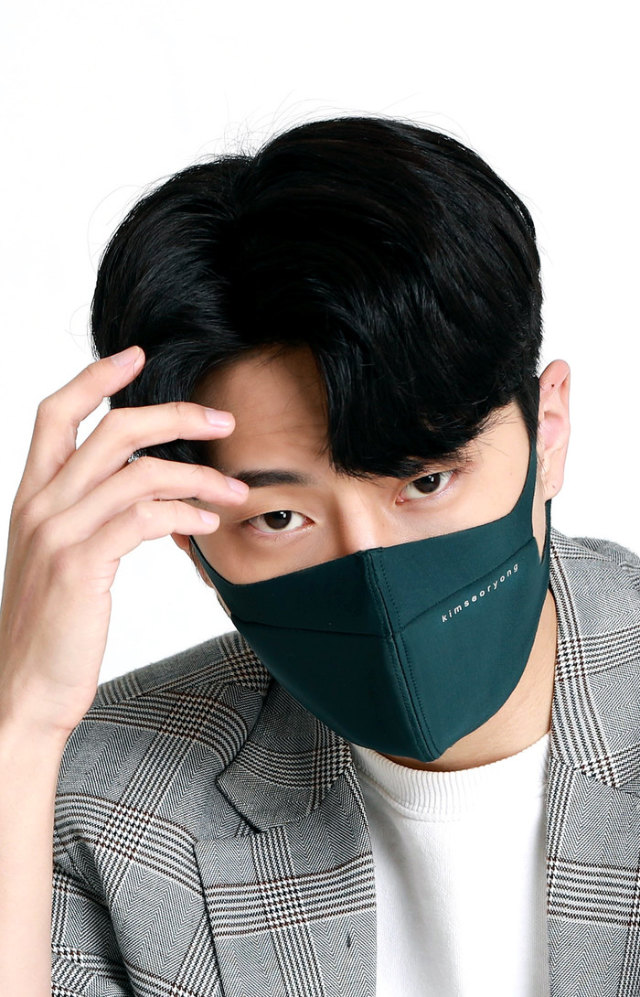 One of Kim Seor Young’s menswear masks for the BreaThe Suit brand of South Korea.
One of Kim Seor Young’s menswear masks for the BreaThe Suit brand of South Korea.
Related articles hand-picked by our editors
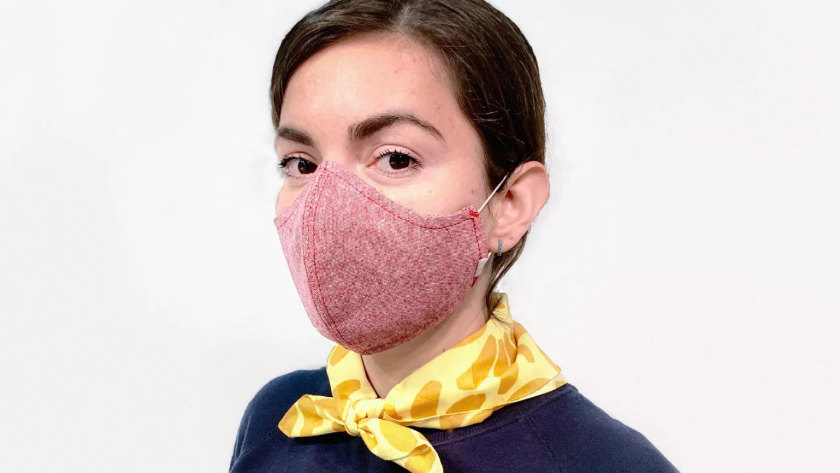
In a more meaningful mode
The fashion, beauty and luxury sectors respond to the COVID-19 pandemic, especially in the west, now the hardest hit part of our planet. Jack Yan looks at their activity to date
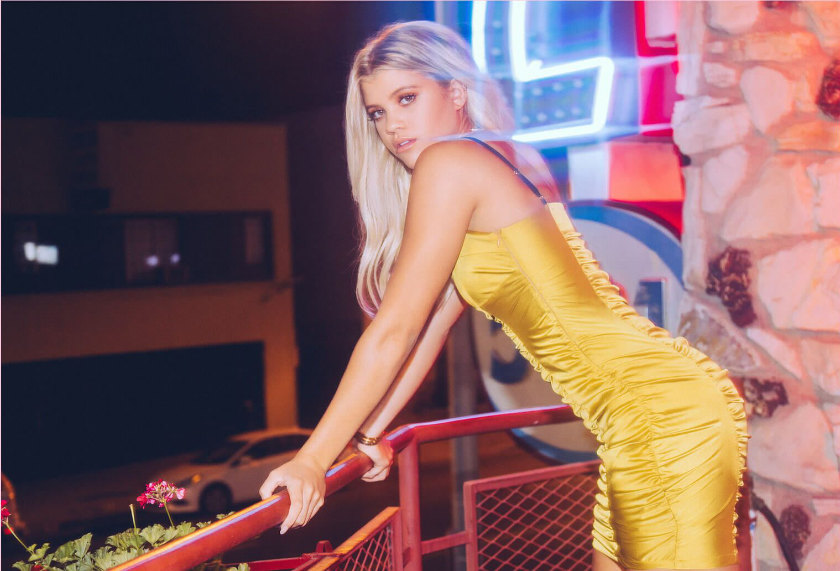
Fast and furious fashion
After decades of being the realm of early adopting computer users, e-commerce is now the norm—but will a western or Chinese model prevail? Bhavana Bhim asks
First published in the September 2019 issue of Lucire KSA

Escaping the black holes
Colette shut in 2017 and other retailers are either disappearing or selling up. Bhavana Bhim examines how retailers can do some soul-searching to present a more authentic face
From the May 2019 issue of Lucire KSA
Advertisement
Copyright ©1997–2022 by JY&A Media, part of Jack Yan & Associates. All rights reserved. JY&A terms and conditions and privacy policy apply to viewing this site. All prices in US dollars except where indicated. Contact us here.